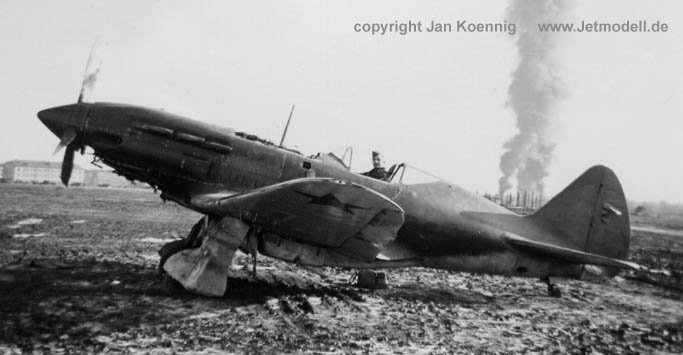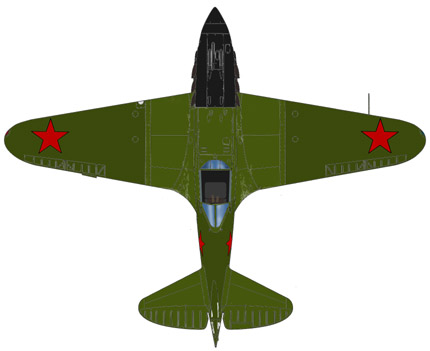Last Modified on March 15, 2005
file name: white17.html
 This photo shows an example captured by Germans at the beginning of the
war.
This photo shows an example captured by Germans at the beginning of the
war.

Copyright Jan
Koennig www.Jetmodell.de
- [email protected]
The aircraft looks damaged, in particular its propeller blades are broken
(not bended), probably by Soviets before leaving the aircraft. The aircraft
looks to have been repainted on its upper surfaces, probably by Germans
after the capture, to camouflage it against Russian air attacks; the photo
shows traces of a large white 17, and traces of a rough cross on the fuselage,
a first German attempt to mark it that was considered unsufficient and
deleted. The star on the fuselage doesn't appear at all, but this could
be due to its low contrast with the green background on a bw photo.
Early MiGs worn considerably standardized painting, so we can deduct
its look before the German capture; its characteristcs are:
-
early type, without slats;
-
without sliding canopy;
-
with radio mast, but not fully radio boxes;
-
with bomb racks visible under the wings (but no bombs);
-
large white digit 17 on the tail;
-
painted green with light blue undersurfaces ( not uniform; as on other
aircrafts, it looks that both colors on the metal parts are lighter than
on the wooden ones);
-
the unusually low demarcation line between green and light blue on the
rear fuselage could be not original, but a German repainting to delete
the fuselage star; so it was drawn straight as standard on the profile;
-
green on the nose and spinner is replaced by a darker color, probably black
(not a rare repainting);
-
black outlined red stars, probably in six positions (wings and fuselage);
-
silver propeller blades with partially black painted rear surface (as standard),
very worn (nearly all silver) with traces of black paint near the spinner;
-
unusually worn look on the rivet and screw heads, where alluminium dots
can be seen.
|
 |



